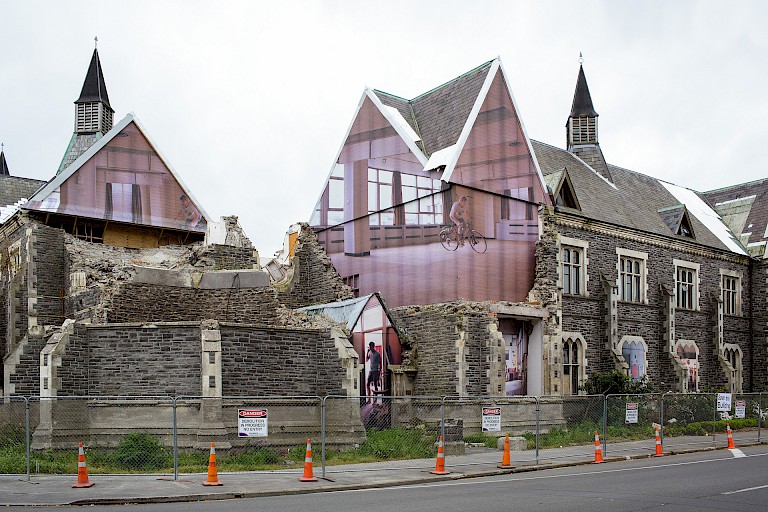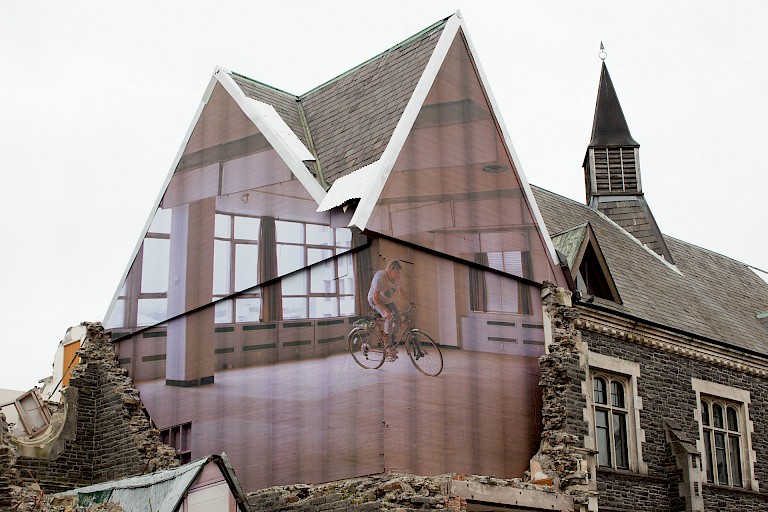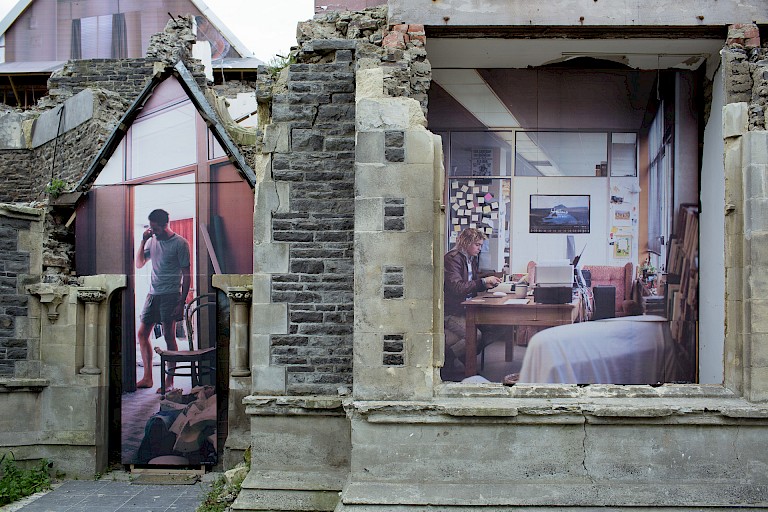



Homage to the Lost Spaces appeared to capture the attention of Christchurch residents. Some of the project costs were, in fact, underwritten by local businesses. Hewson’s art also captured the attention of international audiences, receiving reviews in popular online media, magazines and blogs, including Design Boom, Juxtapoz, and The Cool Hunter, among many others. In this way, Hewson succeeded in his objective of drawing attention to the former life and spirit of an iconic place, and in asking audiences to carefully consider the demolition of the city’s material heritage. The artist also intended the project as a kind of collective mourning. As he put it, “It is important we acknowledge these places in the same way we do other losses. It's almost like we are preparing it for burial—dressing it up, grooming it and saying a final goodbye.”
Given the extent of the quake damage, and the fact that Christchurch city is still recovering from a psychologically traumatic and socially destabilizing series of natural disasters, Hewson’s intuition seems accurate, that local communities have much grieving to do. Homage to the Lost Spaces conceivably facilitated this grieving process by interrupting the everyday routines of reconstruction, creating reflective pauses in which memories of the past and feelings associated with loss were given room to surface, circulate, and perhaps dissipate. Hewson’s project is a good example of how artists can function as ‘symptomatologists’ of society, helping communities, in this case, to make sense amidst and after the senseless disruption and violence of natural disaster.
All copyright belongs to Shanghai Academy of Fine Arts, Shanghai University.



